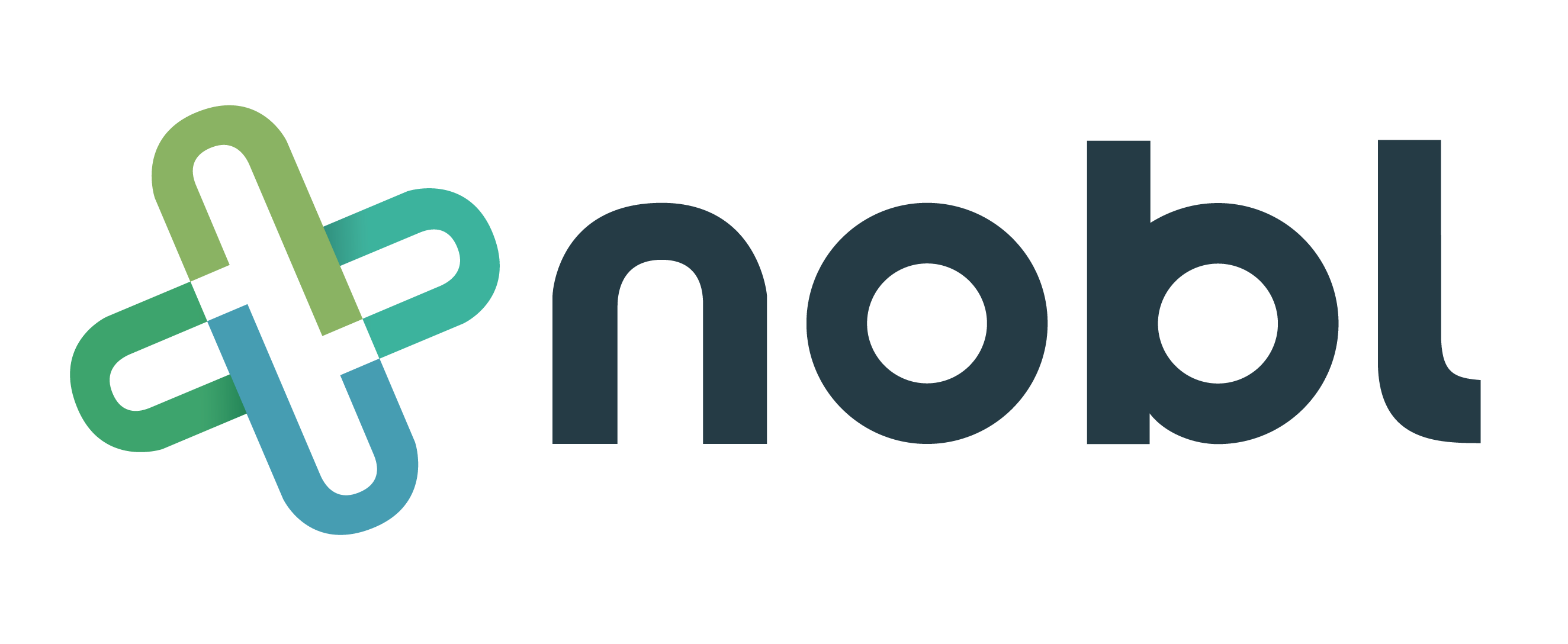
6 min read
Improving Hourly Rounding Engagement
Nobl Health Nov 15, 2022 6:23:00 AM
For over 15 years, hourly rounding, when embraced by all levels of staff within an acute care facility, has been recognized as an industry best practice to reduce patient falls, decrease call light frequency, and improve patient experience perceptions, particularly around nurse responsiveness. These outcomes are achieved when rounds are conducted consistently, e.g. every 1-2 hours, and purposefully, i.e. with intention, connection and standard activities from within the patient room.
We have seen that organizations implement various hourly rounding methodologies, including RN only rounding, RN/PCT shared rounding, or interdisciplinary rounding (other clinical partners involved). With today’s staffing challenges, limiting rounding to one or even two disciplines can make compliance difficult. However, as the 24/7 coordinator of patient care, nurses must be accountable for the overall success of the program by role modeling professional rounding behaviors, supervising others to whom rounding tasks are delegated, and collaborating enthusiastically with other disciplines that are available to assist.

Re-Evaluate and Action Plan
So you have been doing hourly rounding for a while and your staff aren't bought in, you haven't moved the needle on your outcomes or you see that it has shifted to a nurse tech only duty. When we look at what's next, re-evaluation and action planning around the following elements is needed:
-
buy-in and shared vision
-
expectations and accountability
-
barriers to consistent purposeful rounding

Creating Buy-In and a Shared Vision for Hourly Rounding
Without strong buy-in from all levels of the organization, purposeful rounding can be a challenge. Here are several suggestions to bring staff mindsets back to putting the needs of the patient and family at the center.
1. Hourly Rounding Retreat - Representatives from all levels of nursing in a 2 to 4-hour retreat.
By exploring and articulating a shared vision for personalized care for all patients prior to discussing the role of hourly rounding in that process, sets a new basis for hourly rounding completion. Bringing the patient’s needs back to the center of the discussion, moves staff away from self-centric thinking and their needs. Direct care is about meeting patient needs first, since that is what they trust us to do for them.
Here are some suggested discussion questions to get the conversation going.
What is our shared vision for the kind of personalized care that we will provide to our patients?
What are some specific things that we can do to provide the best evidence-based care for our patient population?
-
Which of these things can be accomplished by individual nurses/caregivers by themselves?
-
Which of these things are best done together with others?
-
Which things should occur multiple times during the shift or visit?
What are some specific things that we can do to make care “personal” for them?
-
How do we identify the things that are important to each “person” served in our unit? How will we communicate these “personal” needs and wants to the rest of the team?
What support (supplies, equipment, people, or technology) do we need to provide these things?
Looking at the lists we have created, which of these things could be accomplished by rounding in a purposeful way with our patients?
-
Which things should be done hourly?
-
Daily?
-
Weekly?
-
After they go home?
Thinking about the other things that we are expected to do as a team every day, what do you see as the biggest barriers to creating “personalized” care experiences for our patients?
What would be the major concerns about your individual ability to create “personalized” experiences for your patients?
2. Unit Leadership Support Assessment
Purposeful rounding requires support from leadership, especially unit leaders. Some leaders will have more capacity to assist with hardwiring than others. Adding this additional expectation might be the ‘last straw’ for some leaders, leading to burnout and lack of engagement for this and other processes. The following elements can help to assess which leaders may need external resources, such as patient experience staff, to help get and keep staff focused on the outcome goals.
|
Assessment Criterion |
Description/Impact on Readiness |
|
Number of direct reports
|
Managing people is different from managing projects. People and operational issues will overshadow project needs in nearly all cases. |
|
Number of team members/patients with whom they interact 1:1 daily |
Daily face-time can make them a strong advocate for coaching and success for the team. |
|
Other commitments – school, family, other |
Outside commitments will diminish the return on training or preparation investment for this person as a guide or champion of the change. They may want to do it, but just won’t be available or have the time. |
|
Tenure in their current role
|
Leaders with less than 12 months in their current role are still learning the full extent of their position and may not be confident or experienced enough to add a project into their schedule without more support. |
|
Current Committees
|
Is this individual already over-committed to the point that they will not have the time to support a successful roll-out? |
|
Do they spend more time in their office/away from unit or out on their unit? |
Nursing leaders must balance being accountable to their projects/assignments/meetings with being available to their units. Those who are skewed to either end of that continuum will be challenged to be successful with rounding. Accountable leaders may fill the squares and not sustain support, while available leaders may be able to support the initiative during go-live, but then may fail to use data or reports to the full extent of their usefulness later. |
3. Unit Leadership Session – Sharing the Dissenting Voice
With the unit leaders (NM, ANM, Charge Nurses) on each unit, create a list of all the things that we might hear from the ‘dissenting voices.’ By creating the list of all the negatives, staff can describe their own reasons in general terms without the need to own them as their own feelings. Once the negatives are on the table, the group can systematically create a plan to change the perceptions. Keep in mind that some of these perceptions will be based on actual physical or process barriers that can be addressed. Others will require changing the mental model for some rounders.
-
What are the perceptions out there on why staff don’t/can’t do hourly rounding?
-
What led staff members to feel this way about rounding?
-
What are 2-3 ways that these perceptions might be changed?

Nobl Client Experiences
Based on Nobl client experiences, here are some of the most effective ways to change mental models and rounding behaviors:
-
Adopt ‘team rounding’ practices with emphasis on everyone monitoring the rounding map and jumping in to complete a round for a team-mate. Everyone can mean RNs and PCTs or also other clinicians who might already be in the room, able to meet patient needs, and document the round. Over time, alternating rounds between RNs and PCTs results in PCTs completing more rounds and missed opportunities for expert RN observations, clustering of cares and proactive management of pain or other higher patient needs.
-
Rounding priorities added to the morning huddle can alert all team members to those patients more at risk for fall injuries or other safety needs. Everyone can be alert to assure that hourly rounds on these patients are never late and always conducted in the room. In reality, there will be days when it is difficult to get to every patient every hour when the “bus rolls in” or “staff call-out.” Staff can create a new motto, “Safety First, Round First” by using the rounding map to it’s fullest extent.
-
Identify Rounding Champions who understand the benefits and practice effective, purposeful hourly rounding. Empower these peers to co-round with others or observe rounding and offer praises or advice about how to make rounding purposeful and efficient.
-
Observe unit-level workflow to determine if purposeful rounding might be more effective every two hours. Areas with a higher level of care that require nurses or other clinicians to be in the patient room more often for longer periods, may only need a formal round every two years. Time in the room for an unnecessary round may be viewed as ‘wasting time’ and even contribute to excessive interruptions of rest or family time.

Expectations and Accountability
Learning a new process and the expectations of documenting that process can be overwhelming. Education experts predict that staff only retain 10-30% of knowledge or application principles during the first exposure to that content. Even if everyone completed hourly rounding training or were supported at go-live to practice the correct activities, over time that knowledge and practice erodes. Periodic review of the process and role modeling expectations may be needed until behaviors are hardwired.
-
Nurse Managers and Charge Nurses routinely share the expectations and successes of hourly rounding, i.e. observations of purposeful rounds, positive comments from patients and families, compliance rates, average time per round (predicts the percentage of patients receiving purposeful rounds) and percentage of on-time rounds. Linking these metrics to reductions in patient falls or improvements in patient experience scores.
-
Rounding Competencies as part of a skills day or over a week or two can set expectations for correct hourly rounding. Staff unable to complete the entire rounding process correctly after three attempts are offered remedial instruction on the process and held accountable for changing their performance.
-
Adding accountability for hourly rounding success to the annual performance goals of all levels of nursing can enhance the focus that unit leaders place on success.

Barriers to Consistent Purposeful Rounding
Completing an assessment of physical barriers to rounding is important. Assess the following –
-
Staff unaware that they can access the map from any computer during a round.
-
Staff not supported to ‘share rounds’ when others are tied up.
-
Barcodes in the room in an awkward to reach without disrupting the patient.
-
Misunderstanding of ‘rounding clock’ reset cadence.
-
Rigid emphasis on ‘your hour’ and ‘my hour’ accountability
Written by Terry Anderson, EdD, MSN, RN, NE-BC
Nobl Chief Nursing Officer
New Free eBook
Best Practices for Sharing and Reviewing Data from the Nobl Rounding Platform
Beryl Institute Case study
Improved First Impressions at Your Front Door - Patient Ambassador Rounders Enhance the Patient Experience of a Busy Emergency Department
Recent Posts

Five Key Factors to Consider in Pediatric Leadership Rounding


